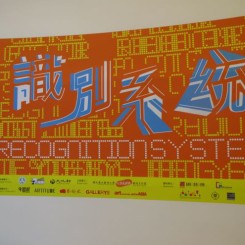Text by Huang Bihe
Recognition System: 2014 Kuandu Biennale
Taipei National University of the Arts – Kuandu Museum of Fine Arts, Sep 26–Dec 14, 2014
The Kuandu Biennale is without doubt orderly and subdued in contrast with the other dizzyingly-massive biennials out there. Located in the Taipei National University of the Arts on the outskirts of Taipei and hemmed in against the mountains, the Kuandu Museum of Fine Arts certainly is not large. Yet since “Artist in Wonderland” (2012), it has kept up a particular modus operandi: ten curators from different regions in Asia recommend ten artists for a series of ten solo exhibitions. With its relatively independent and smaller-scale spaces, the museum has been able to present a certain continuity and comprehensiveness while maintaining an individual look. In its attempt to create a network of discourse and exchanges spanning numerous countries and regions in Asia, the Kuandu Biennale’s pan-Asian perspective since being founded in 2008 is, for many Mainland Chinese researchers, a rich area of exploration.
The theme of this year’s biennale, “Recognition System”, remains characteristic of exhibitions in years past with its broad, yet pertinent questions. Interpretations of the theme not only encompass the conversion and subversion of various established systems and their de facto practices, rules and body of knowledge, but also extend to the struggle to re-establish and integrate systems in areas facing crises of boundaries from the impact of various ideological trends and doctrines. The biennale is free from the strictures of a strong curatorial concept due to its broad theme and curator-based nomination process; curators act independently of each other, with minimal internal coordination and communication. In a way, the entire exhibition feels somewhat lax and incoherent, but this is what allows greater possibilities for free and organic collisions among the separate modules.
The Taiwanese artist Kao Chung-Li’s series mainly revolves around reflections on film as a medium. “Slideshow Cinema VI—An Autumn Afternoon” intersperses film slides and text in a slightly didactic presentation, examining the militarism behind the Japanese director Yasujiro Ozu’s seemingly serene cinematic style by delving into the director’s military background. Instead of flashing back to Taiwan’s traumatic history of colonialism and neo-colonialism during its period of Japanese occupation and era of American aid, the work serves as a meditation on the possibilities of film as an anti-colonialist weapon against films that serve as tools of aggression and invasion. “My Mentor, Chen Yingzhen” (2010) combines the artist’s home videos, a slideshow of pencil sketches outlining the lives of historical figures, and texts. While expressing the artist’s reverence for Chen as an anti-colonialist artist, Kao also interjects with a small camera which darts across the screen from time to time. By interrupting the flow of the video work, the artist awakens the audience from the video’s sublime trance. Additionally, the sporadic use of the slide transitions are by nature a tribute to this ever-cautious and controversial figure.

Kao Chung-Li (Curator: Liu Yung-hao)
高重黎 (策展人:刘永皓)
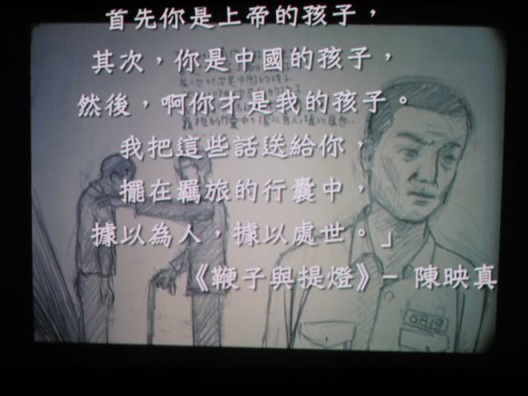
Kao Chung-Li (Curator: Liu Yung-hao)
高重黎 (策展人:刘永皓)
The Chinese artist Li Gang’s “Ruins” (2013) is similar. Li extracts and transforms ink as a medium by intervening with materials and bricks, thus engaging in a meditation on the unstoppable whirlpool of reconstruction and urbanization in China.
The Hong Kong artist Kwan Sheung-Chi’s “Night Market” (2014) is an on-the-ground exploration of Taiwanese history and social psychology—taking as its point of departure Hong Kongers’ fascination with the worldly atmosphere of Taiwanese night markets and nightlife. The installation delves into seemingly the commonplace night market culture to examine its intricate political connections. The artist selected a few of Teresa Teng’s lesser-known songs to be played in a simulated open air karaoke stage. Sharing the stage with this voice of a generation are photographs from the singer’s Kinmen Island USO tour and her performance during the Concert for Democracy in China; while Teng sings melancholy songs of love, these photographs help audiences discover the bitter homesickness and the eagerness to begin all over again across the Taiwan Strait. Encompassed in these declarations of war between the sexes is an analogy of cross-strait political struggle. Another part of the installation invites audiences to play a carnival game of shooting balloons with toy guns—the black and white balloons representing imaginary friends and foes. With the participants’ delight in their revenge, the installation inspires viewers to reflect on the politics of envy connoted therein.
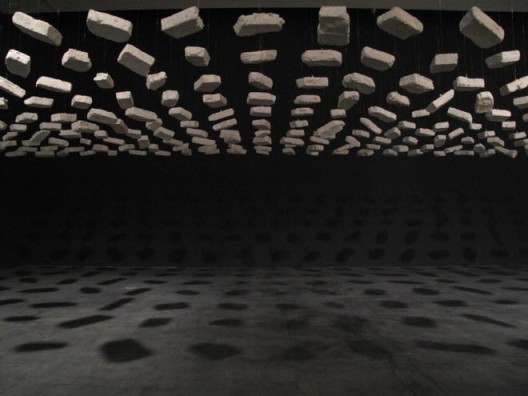
Li Gang (Curator: Wang Huangsheng)
李钢(策展人:王璜生)
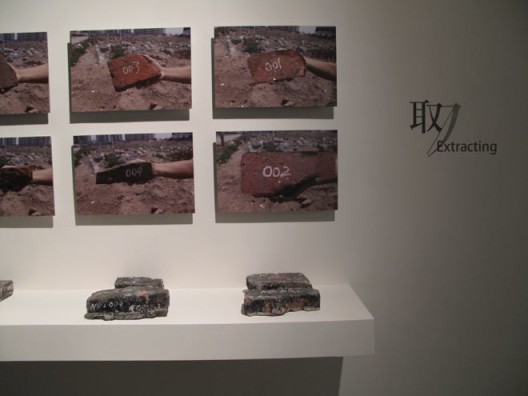
Li Gang (Curator: Wang Huangsheng)
李钢(策展人:王璜生)
The young Thai art group Money Fakery has created a new system for manufacturing, storing and distributing currency through audience participation. After viewers illustrate their own bills, they are able to store the counterfeit currency in a counterfeit bank, purchase items from a discount supermarket, and even take the “money” to a casino for a round of gambling. The meticulously installed neon lights, the primal atmosphere created by tropical flora and high-decibel pop music played on a loop combine to create an energy and freedom specific to the rebellious lives of some of the underclass. As viewers lose themselves in the grand banquet of consumption presented by the artists’ carefully designed audiovisual playground, will they be able to discern whether the work is a serious attempt to resist current rules of circulation or merely consider it a harmless game played for self-entertainment?
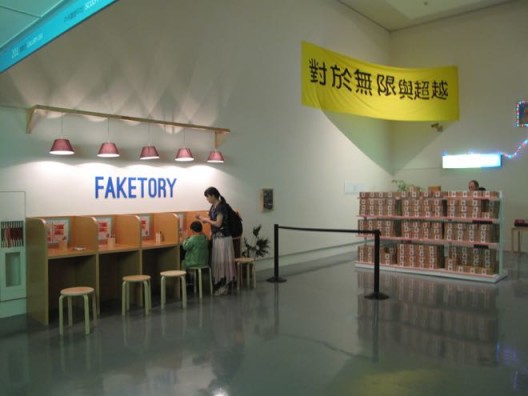
Money Faketory (Curator: Pichaya Aime Suphavanj)
伪币工厂(策展人:皮夏雅•艾美•苏帕瓦妮)
Elsewhere, the Taiwanese artist Chang Yung-Ta’s “Relative Perceptions No. 1” (2014) and the Australian artist David Haines’s “Wollemi Kirlians” (2014) both explore the minutiae of human sensory systems. In Chang’s installation, water drips onto heated metal plates set up at varying angles, resulting in differing rates of flow and gasification, which produce short or long bursts of sound. The sizzling of the heated metal plates triggers the audience’s primal reactions to danger, stimulating long-dormant tactile and auditory senses, drawing the audience into the work’s field of perception. Meanwhile, Haines’s installation pairs a special fragrance the artist created in his Aroma Studio with a series of images of plants taken with the Kirlian photography technique. By establishing a sensory recognition system within the museum space through effective manipulation of olfactory elements, the installation establishes some sort of sensory equilibrium within the viewer’s otherwise visually dominated senses.
In such a small-scale biennial, the viewer is under no anxiety about overlooking anything. With a small number of relatively independent spaces spread out across the museum, audiences are able to immerse themselves in individual artists and works, yet this strategy also fragments the cohesion of the biennale as a whole. At some point, the biennial’s curators should perhaps begin to consider to what degree this ever more formulaic approach of 10 curators + 10 artists is still able to stimulate discourse and exchange within the region.
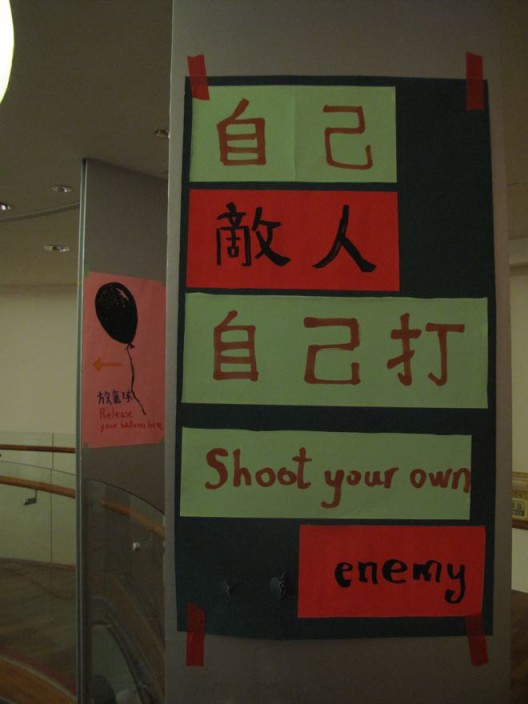
Kwan Sheung Chi (Curator: Anthony Yung)
关尚智(策展人:翁子健)
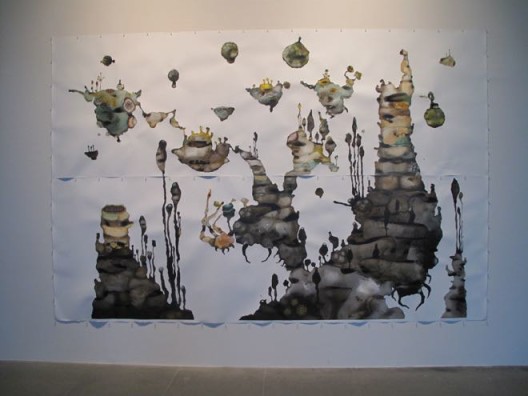
David Haines (Curator: Jasmin Stephens)
大卫•汉斯(策展人:洁丝敏•史蒂芬斯)
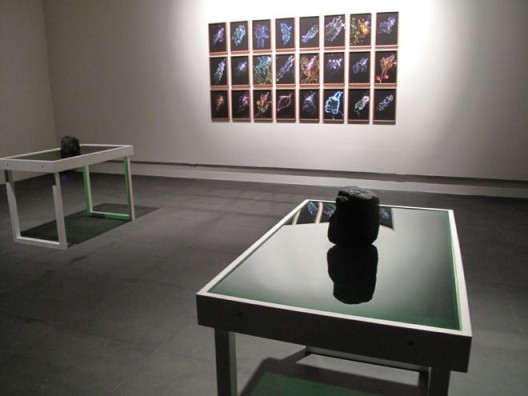
David Haines (Curator: Jasmin Stephens)
大卫•汉斯(策展人:洁丝敏•史蒂芬斯)
